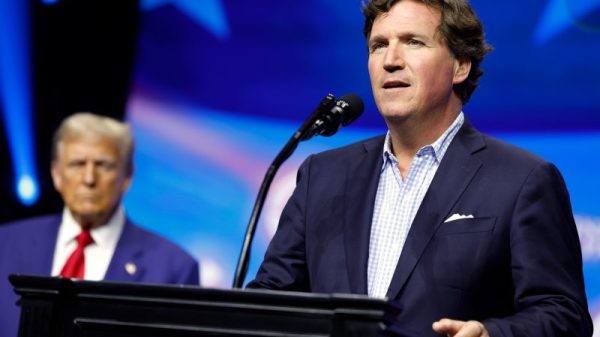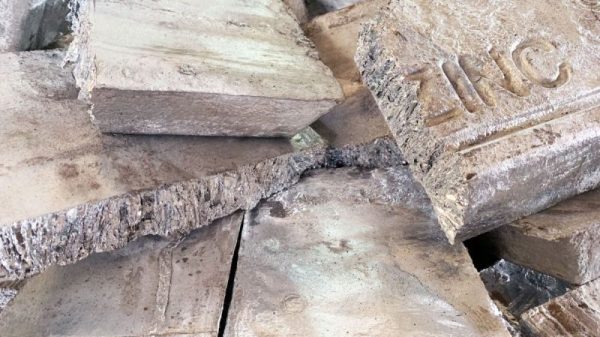Mexican President Andrés Manuel López Obrador has long been critical of his country’s Supreme Court as it stood in the way of some of his signature policy proposals. This month, as he closes out his six-year term in office, he appears poised to remake the entire judiciary in his mold.
Lawmakers in Mexico City this week began to push through a sweeping constitutional reform that would see Mexicans select judges at all levels of government through elections, a procedure that legal experts say would turn Mexico into an international outlier.
The controversial measure passed the lower chamber of Congress on Wednesday with overwhelming support. The reform will next be voted on in the Senate, where its approval is likely due to López Obrador’s ruling coalition being one senator short of a supermajority.
López Obrador, a popular leftist, says the overhaul is necessary to rid the judiciary of corruption and ensure its responsive to the popular will. Critics of the reform call it a power grab that will expose one of the last remaining checks on presidential power to political influence.
“I see this as a constitutional crisis,” said Mariana Campos, the general director of México Evalúa, a civil society organization. “The judiciary has been a counterweight for the executive and the legislative branches, and the president and his political group believe that they can’t advance their objectives with this type of counterweight.”
Opposition to the reform has quickly manifested into monumental schisms, with the country’s Supreme Court justices voting this week to join a nationwide protest of judicial workers grinding most legal proceedings to a halt.
A rare and stinging critique from US Ambassador Ken Salazar in Mexico City, in which he called the election of judges “a major risk to the functioning of Mexico’s democracy,” led to an international spat between the countries. And warnings from business groups that the reform could undermine the Mexican investment environment sent the value of the peso tumbling.
On Tuesday, protesting judicial staff blocked the entrance to the lower chamber of Congress, forcing lawmakers into an overnight session held in a sports complex, with basketball hoops hanging overhead.
Still, even critics of the reform acknowledge it appears likely to move swiftly through the Mexican legislature with the president’s political party exerting wide margins of control.
A battle for seats
Under the current law, Supreme Court judges in Mexico are nominated by the president and must be approved in the Senate. Federal judges are selected by a judicial commission that uses professional exams and coursework to evaluate candidates on a meritocratic basis.
If the reform passes, judicial elections would take place next year after a period of campaigning. About 7,000 judges would be required to battle for their seats, or turn the gavel over over to the most popular candidate.
It would see candidates for judicial postings submit applications and be nominated to run in an election by evaluation committees within the executive, legislative, and judicial branches.
Additionally, the number of judges serving on the Supreme Court would be reduced from 11 to nine, and their term would be shortened to 12 years instead of 15.
While the reform spells out judicial elections that are independent of political parties, an analysis released earlier this year by the Center for Constitutional Studies, an investigative branch of the Supreme Court, concluded that the new selection process for judges would “undermine the perception of impartiality” in the judiciary.
“The method of designating candidates to judicial positions favors their proximity to political authorities, political parties or judicial leaders,” the analysis said.
The analysis also noted that judicial elections would generate “a risk of co-optation of jurisdictional bodies by private interests, such as large business groups or even criminal organizations,” who already use widespread violence to influence local political elections.
“The government is creating an institutional infrastructure that will permit external pressures on judges so that they’re not necessarily responding to the law and the facts, but rather trying to look good in order to be able to maintain their position,” Campos, with México Evalúa, said.
The effort to hand over the selection of judges to a popular vote arrives as López Obrador’s political movement grows in power. In June, Claudia Sheinbaum, a former mayor of Mexico City and López Obrador’s political protégé, was elected president in a landslide, winning nearly 60 percent of the nationwide vote.
Sheinbaum, who will take office on October 1, has challenged the perception that the reform would concentrate power for ruling party Morena. In a video statement last week, she emphasized that the process to nominate judge candidates will be split between the three branches of government.
Defenders of the reform have also pointed to the United States as an example of a long-running model for judicial elections. But the comparison between the two countries is inadequate, said Michael Nelson, a political science professor at Pennsylvania State University who studies judicial systems around the world.
Thirty-nine states in the US carry out judicial elections in some form, while federal judges are appointed by the president and confirmed in the Senate. “Mexico would be the only country in the world that elects judges at such a scale,” he said.
The heavily politicized context that the reforms are being made under could also impact how voters view the elections in the near-term, Nelson said.
“The Mexico proposal is not coming out of nowhere – this isn’t people sitting around in Philadelphia in the 1700s saying how should we design a judiciary,” he said. “(Voters) are going to remember that these elections came about because the president was angry at the courts and their experience of the election is going to be filtered through that.”
Legal experts say the closest benchmark to weigh the Mexican reform against comes from Bolivia, the small Andean state which in 2011 became the first modern country to directly elect its federal judges.
The reform there achieved some of its desired results: Bolivia’s federal bench became the most diverse constitutional court in the Western Hemisphere, with historically high numbers of female and minority jurists, according to a 2015 paper in the Journal of Law and Courts.
But opinion polls measured a decrease in public confidence in the Supreme Court after the reform took hold, the research found.
“Even if changes are perfectly designed and adopted with broad consensus, if the public perceives the process to have been politicized then public faith in the resulting institutions may be in jeopardy,” said Florida State University professor Amanda Driscoll, one of the authors of the paper.

























